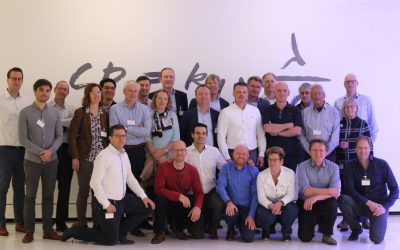Offshoring has been a dominant trend for decades. Originally for manufacturing companies but with the advent of the internet also for service companies like ICT service provides and call centers. In the last few years you might have heard the word ‘reshoring’ popping up more often. Since the launch of the ‘America First’ paradigm by Trump, this topic became part of mainstream public debate. Most notably with the Carrier case, during Trump’s first weeks in office.
Several research studies in Europe and the US have shown that a significant part of organizations with manufacturing activities in low cost countries are reshoring these activities or considering to do so. Larger companies more often (30%) than smaller businesses (10-15%).
The main driver behind transferring manufacturing activities to low cost countries used to be costs. The motives to return these activities to the homeland are more diverse. Shortened product life cycles, shorter delivery times, need for tailor-made solutions and demands for increased flexibility make it sometimes necessary to produce in the proximity of the home market. Far-reaching automation of the production process, supported by robotics, sensor technologies and artificial intelligence, makes the wage component less dominant.
Although offshoring was mostly triggered by cost considerations, notably labor cost reduction, quite paradoxically the cost component is also an essential driver for reshoring initiatives. Experiences have taught us that a one-sided focus on labor costs results in a distorted picture and that a more nuanced analysis proves that there are often hidden costs. There are a couple of reasons to be careful with focusing too narrowly on labor costs in evaluating production allocation alternatives.
Firstly, because labor costs don’t remain low. As soon as countries or regions start to develop as manufacturing locations, wages tend to increase. China is a clear example of this. Wages have mounted significantly over the last 10-15 years, resulting in evaporating financial advantages. Relocation to another low cost country might be an option, but this again might require huge investments.
Secondly, the labor productivity of developed countries is in most cases still significantly higher than that of developing countries. An often much higher hourly rate is countervailed by a higher economic output.
A third reason to be cautious with focus on labor costs in taking production allocation decisions, is that cost models underpinning these decisions are often too limited, making it impossible to properly gauge important factors. Costs of raw materials and labor are usually relatively easy to determine, but how to deal with costs for transportation, stock-keeping, travel and lodging of staff, insurances, failure, recruiting and training, theft of intellectual property, etc.?
It’s a pity if you would decide to offshore production activities to a low cost country, only to learn that the projected savings fail to materialize. Conversely, it would also be regrettable if you would miss out on opportunities to benefit from offshoring. Tarlunt Consulting Group is specialized in complex cost price calculations to substantiate decisions regarding reshoring and offshoring. For this we use advanced costing models and benchmark databases to factor in price differences between countries. With these models and databases we are able to apply local prices for labor, energy, transportation, insurances, taxes, etc. in cost price calculations.
Do you want to know more about how we can support you in preparing a substantiated decision about (re)allocation of your production facilities? Please contact us.




